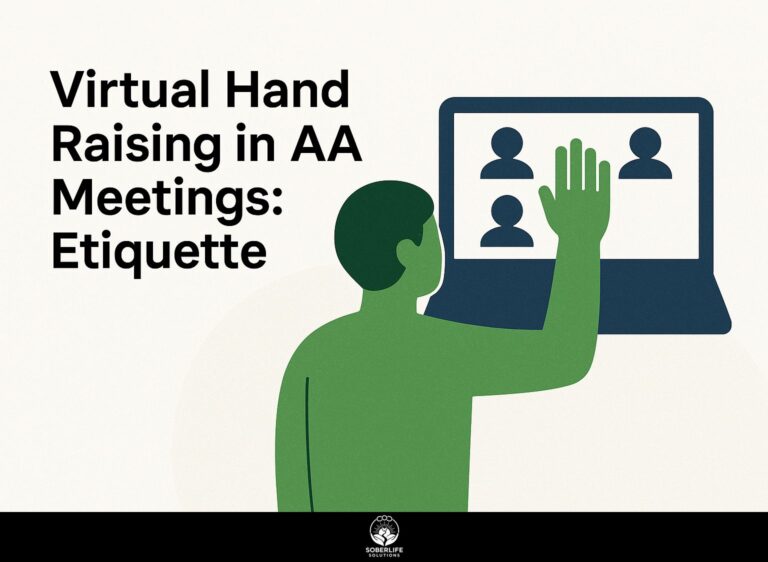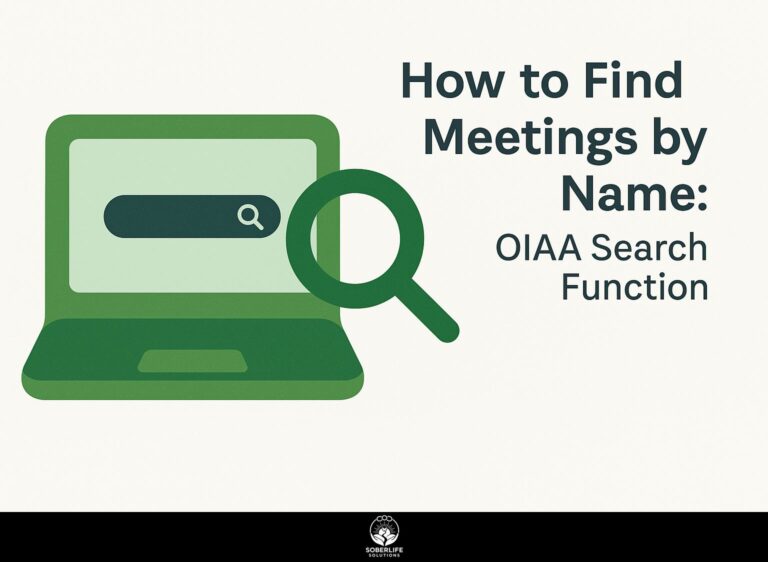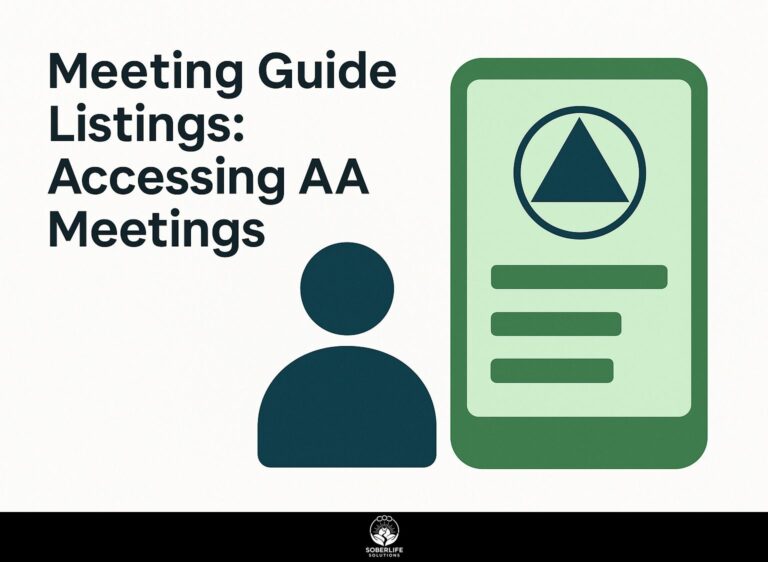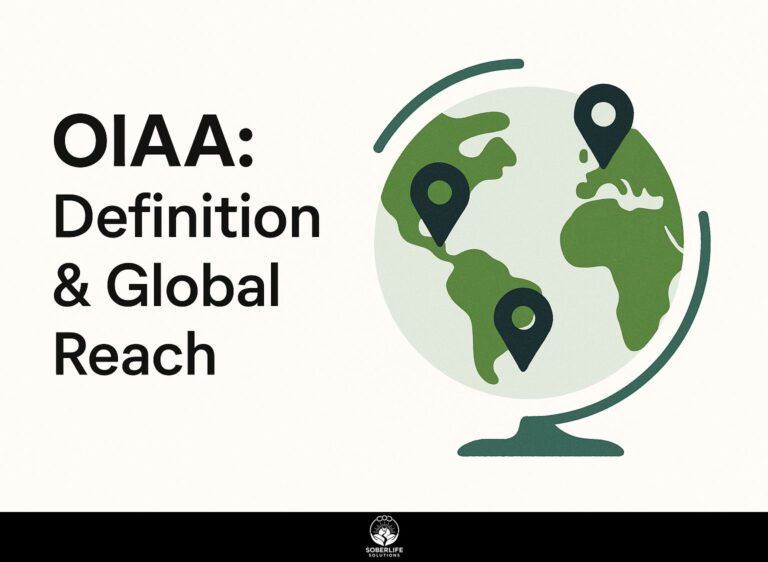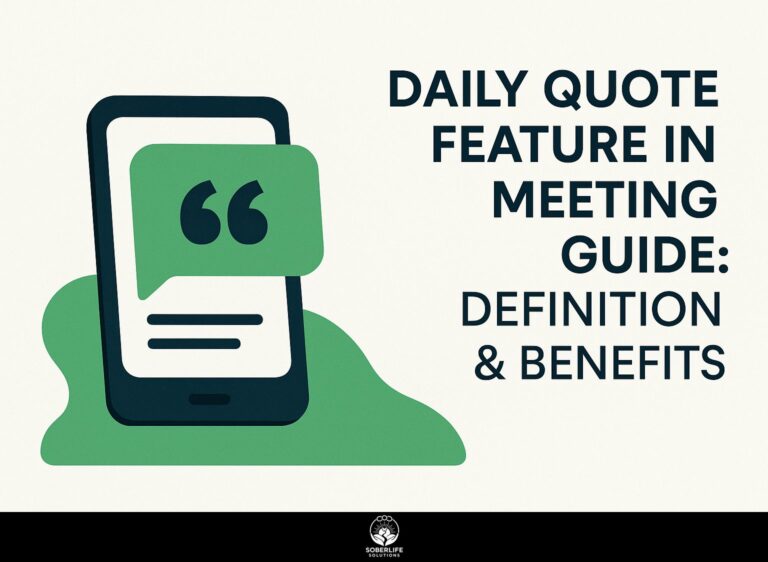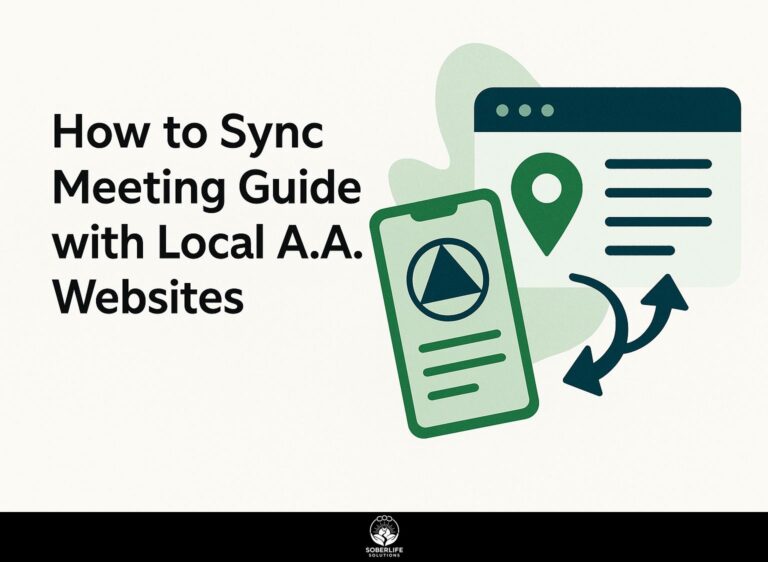AA Marathon Meetings: Purpose & Participation
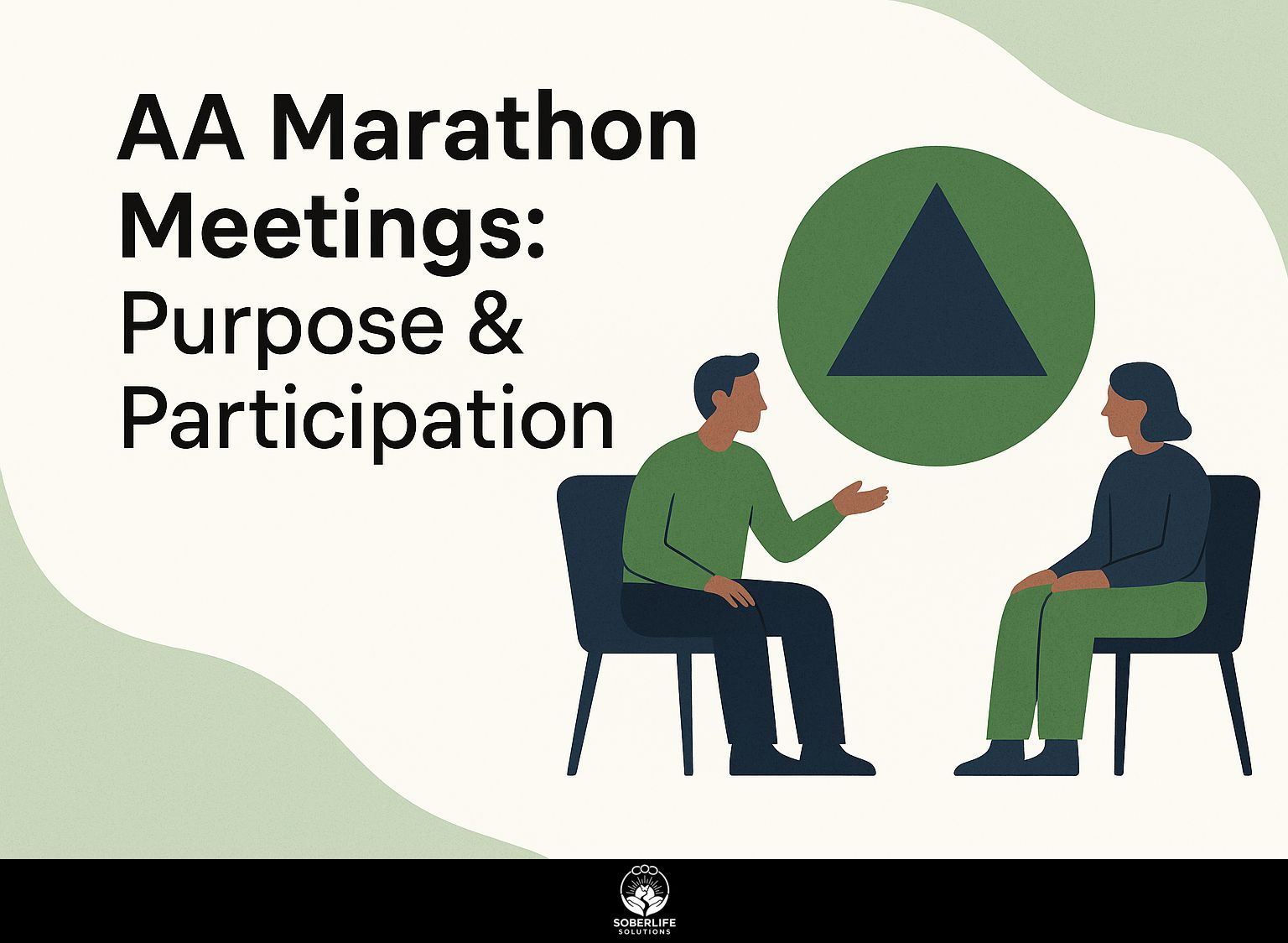
Introduction to AA Marathon Meetings
AA meetings are essential for people recovering from alcoholism. Alcoholics Anonymous provides different types of meetings, including open meetings for new members and closed meetings for those looking for stronger connections. This article looks at the purpose of AA marathon meetings, based on the Twelve Steps, and shows how taking part actively builds a helpful community. Learn how these longer meetings can improve your recovery and solidify your dedication to staying sober.
Key Takeaways:
Purpose of AA Marathon Meetings
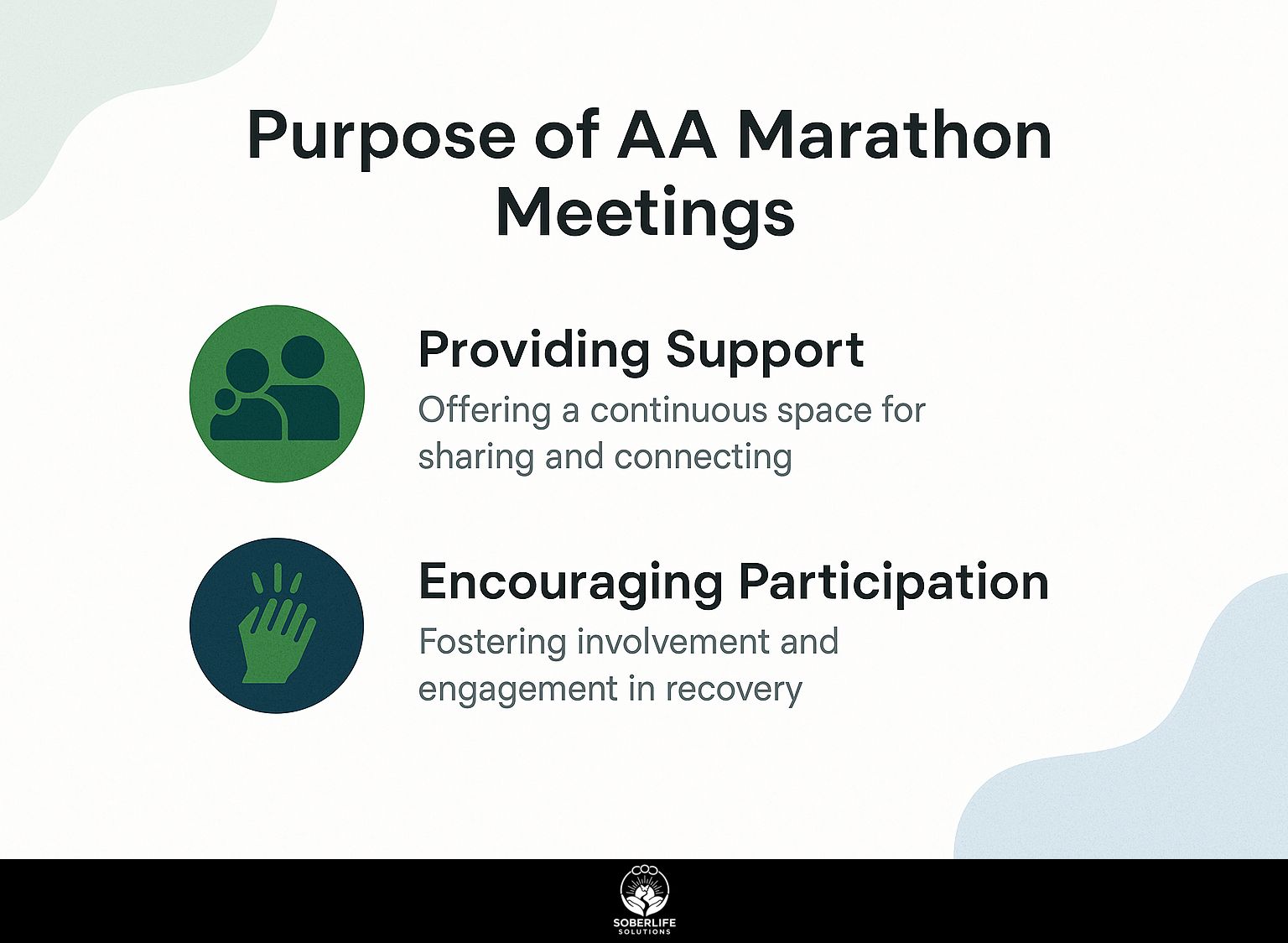
The main goal of AA Marathon Meetings is to offer a structured setting where people can meet, share experiences, and help each other stay sober. According to Wikipedia’s entry on the Twelve-step program, these meetings follow a set of guiding principles designed to support individuals in their journey towards sobriety. For a deeper understanding of the different formats and benefits of A.A. meetings, explore how they cater to diverse needs and preferences.
Providing Support
Support in AA Marathon Meetings is facilitated through various formats, including discussions, speaker meetings, and the collective recitation of the Serenity Prayer.
In these meetings, people often talk about their experiences, which can offer helpful ideas for recovery. Participants can use the Big Book, a main text in AA, to help guide discussions and think about their personal experiences. This foundational text, as detailed on Wikipedia, provides essential insights and frameworks that are integral to the AA experience.
Speaker meetings let chosen members tell their stories, creating a feeling of belonging and optimism in the group. Encouraging an open environment helps members to ask questions, get advice, and give support, which all improve the experience of healing and connection.
Encouraging Participation
It’s important to encourage participation, especially for those who are new. Using methods like pairing them with a buddy and having volunteers lead sessions can create a friendly environment.
To make these strategies work well, start by matching each new person with an experienced member who can offer help and advice.
Organize regular volunteer-led workshops that cover essential topics like skills development or community guidelines.
Tools like Google Meet or Zoom can help hold these sessions online, while platforms like Slack improve ongoing communication.
Consider creating a mentorship program with clear goals and expectations, helping both mentors and mentees to engage meaningfully within the community. Related insight: Peer Support Networks: Importance for Recovery
Structure of AA Marathon Meetings
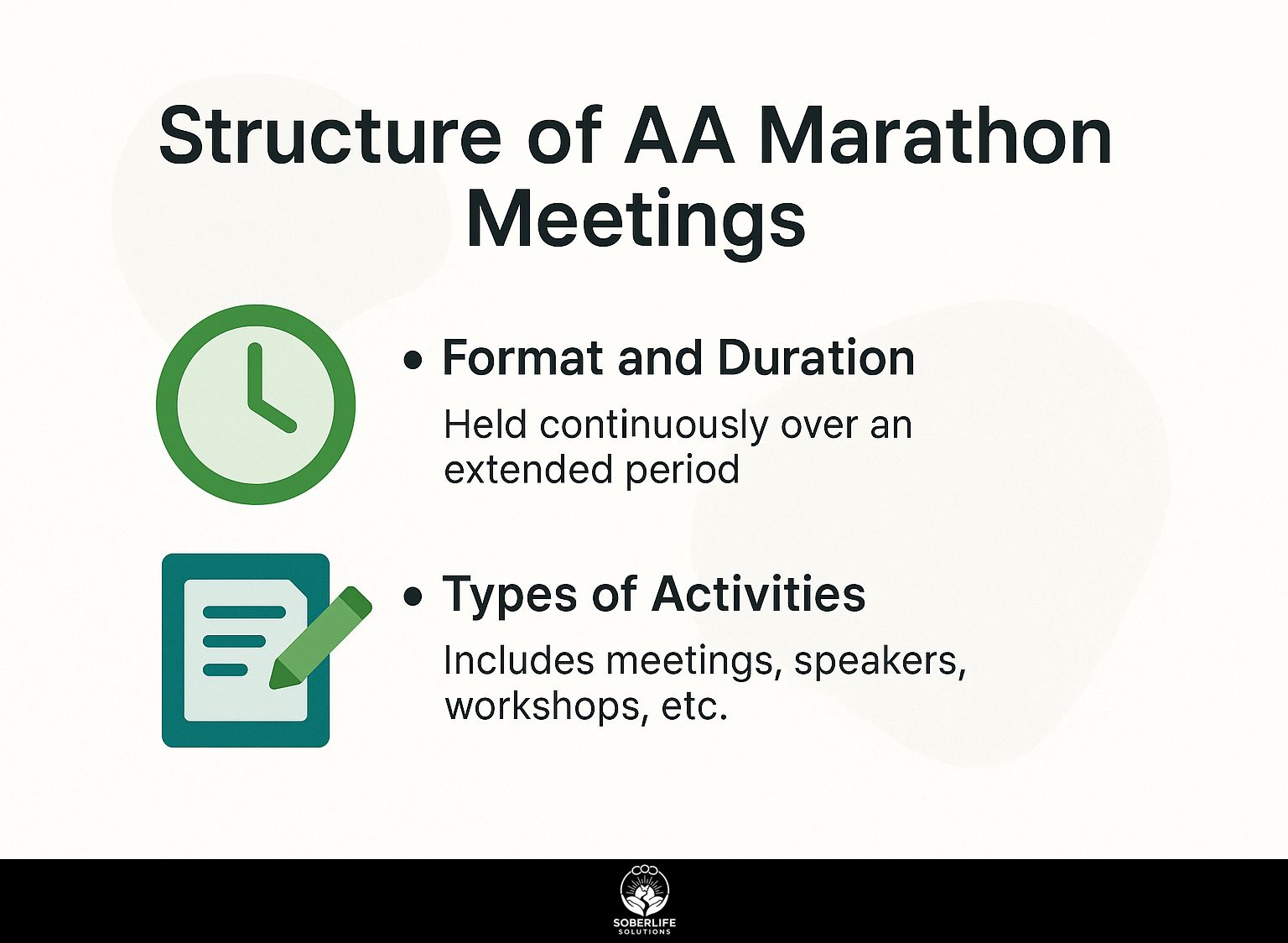
AA Marathon Meetings typically have a structured schedule that encourages participants to express their feelings and helps everyone provide mutual support. For those interested in understanding why these meetings are considered essential, a detailed exploration is available on why A.A. meetings are crucial for addressing challenges and providing support.
Format and Duration
Most AA Marathon Meetings last 2-3 hours, typically alternating between speaker sessions and open discussions, accommodating both in-person and virtual formats.
The setup helps everyone take part successfully. For example, in-person attendees may enjoy the warmth of face-to-face interactions, while virtual attendees appreciate the flexibility of joining from anywhere.
Each meeting often begins with a speaker sharing their recovery story for about 30 minutes, followed by a structured discussion topic. Following this, there is a time for open discussion, where people can share their thoughts, no matter what type of meeting it is. This acceptance creates a community feeling, important for people in recovery.
Types of Activities
Activities at AA Marathon Meetings include talks by speakers, opportunities to share personal experiences, and directed discussions, all intended to improve peer support and strengthen emotional connections.
During these meetings, participants often engage in small-group discussions that allow for deeper connection.
For example, each session might include a new participant who talks about their experiences, encouraging empathy and knowledge among members.
Guided discussions may introduce specific topics-like coping strategies during difficult times-encouraging members to contribute personal stories.
Using tools like discussion starters or topics can improve these conversations, allowing everyone to share their feelings and support each other effectively.
This structure is essential for building a sense of community and shared experience among attendees.
Benefits of Participation
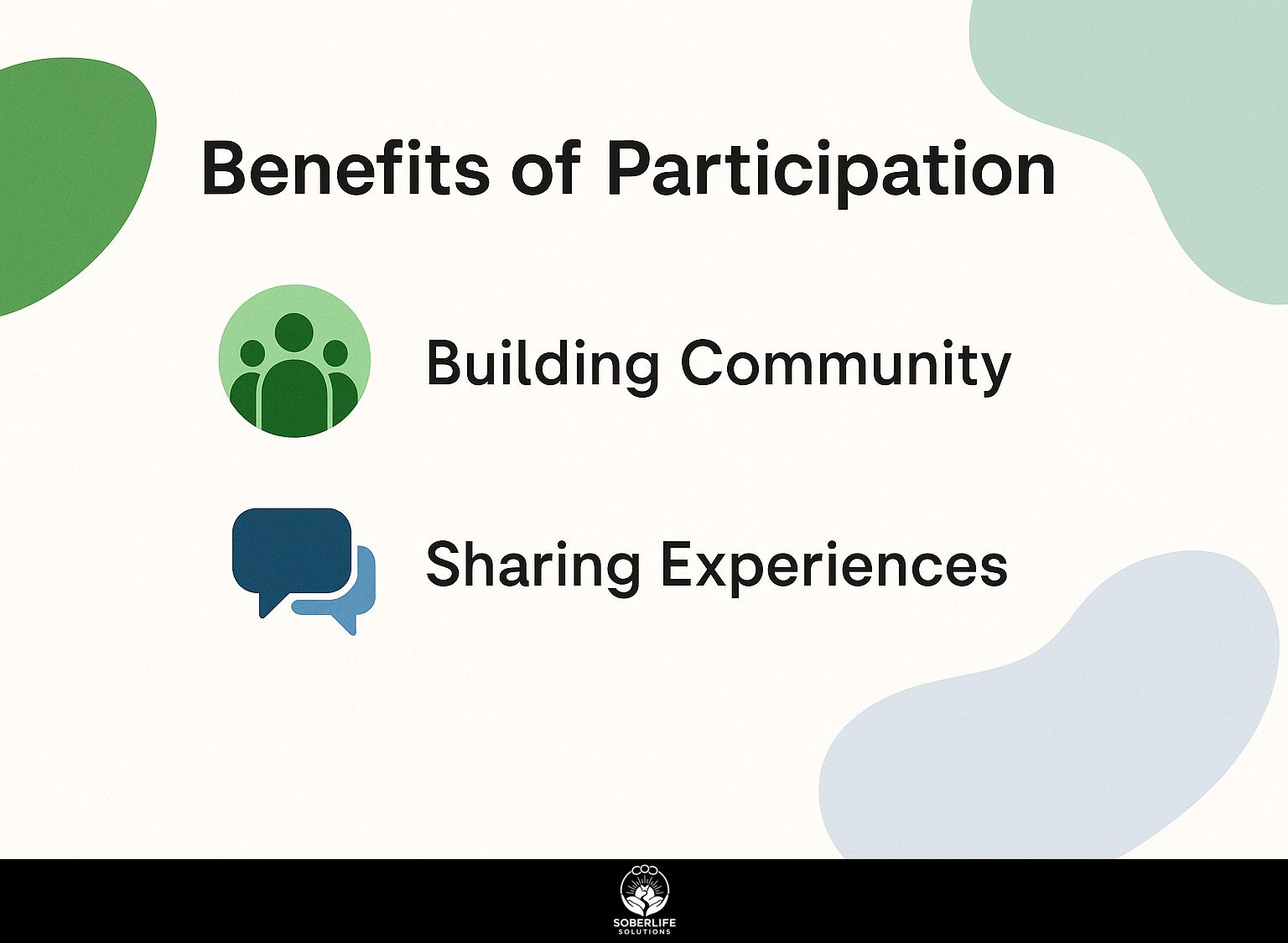
Joining AA Marathon Meetings brings many benefits, such as personal development, connecting with others, and exchanging experiences that strengthen goals for staying sober.
Building Community
Building a sense of community is a key benefit of AA Marathon Meetings, providing members with essential social support critical to their recovery process.
These meetings offer a special place to share experiences and build relationships that turn into long-lasting friendships.
For example, two members might connect over shared challenges during a conversation, eventually becoming a support system that continues outside the meeting.
Participants often exchange contact information to check in on each other, ensuring accountability and encouragement outside of the weekly gatherings.
Group activities, such as shared social events or service projects, further deepen these connections, reinforcing the commitment to sobriety together. Worth exploring: Peer Support Networks: Importance for Recovery
Sharing Experiences
Talking about personal experiences in meetings helps with emotional support and group learning, which is essential to the Twelve Steps approach.
When participants openly discuss their challenges and successes, it builds a strong community bond. For example, a person who has relapsed might feel comforted by listening to another member’s story of becoming sober. This conversation helps them feel normal and builds their strength.
To help with this sharing, group leaders could organize planned sharing sessions or use questions to steer discussions. Using tools like a talking stick ensures everyone gets a chance to speak, making meetings more open to everyone and helping both personal growth and group awareness.
Challenges in Participation
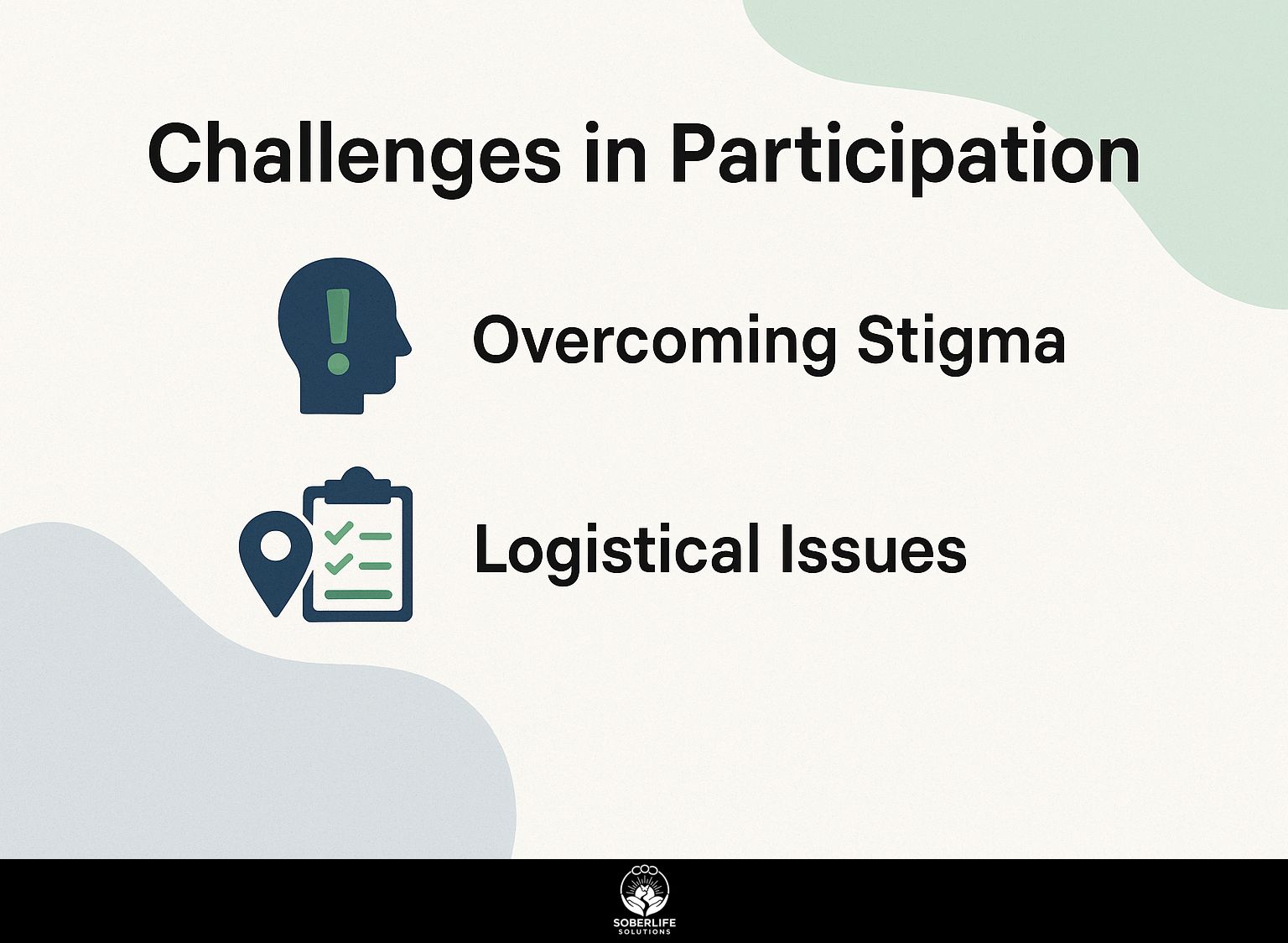
Although helpful, people attending AA Marathon Meetings often deal with issues like stigma and practical difficulties that can slow down their path to recovery.
Overcoming Stigma
Overcoming stigma linked to alcohol use disorder is essential; AA Marathon Meetings offer a safe space for individuals to share freely.
These meetings help people feel included and connected, which is necessary for recovery. By encouraging participants to share their experiences without fear of judgment, AA creates an environment where honesty is valued. To understand the broader impacts of tackling stigma, an expert opinion by Johns Hopkins Medicine highlights the importance of reducing stigma on a societal level.
Members often describe the relief of being understood and supported by peers who face similar challenges. The format of marathon meetings-typically extended gatherings-allows for deeper conversations and connection, a concept further explored in discussions on the importance of peer support networks in recovery.
When people share their stories, it helps them heal and encourages others by reducing stigma together.
Logistical Issues
Logistical issues, such as transportation to in-person meetings and accessibility of virtual options, can impede participation and recovery efforts.
To overcome these barriers, consider the following solutions:
- Make carpooling easier by linking users through a community app, which makes travel simple and reduces stress about transportation.
- Choose local community centers for meetings, and confirm they have ramps and clear signs for easy entry.
- For virtual options, promote platforms like Zoom or Google Meet, offering tutorials for those unfamiliar with technology.
- Arrange meetings at times that suit everyone’s work schedules, making it easier for everyone to attend.
Frequently Asked Questions
What is the purpose of AA marathon meetings?
The purpose of AA marathon meetings is to provide individuals with a safe and supportive environment to share their experiences, struggles, and successes in overcoming alcohol addiction. These meetings also offer a sense of community and fellowship among members.
Who can participate in AA marathon meetings?
AA marathon meetings are open to anyone who is struggling with alcohol addiction or has a desire to stop drinking. These meetings are also open to family members and loved ones of those struggling with addiction.
What happens during an AA marathon meeting?
During an AA marathon meeting, individuals take turns sharing their stories and experiences related to alcohol addiction and recovery. The meeting may also include readings from the AA Big Book and discussions on various recovery topics.
Are AA marathon meetings religious in nature?
While AA does have a spiritual component in its 12-step program, AA marathon meetings are not religious in nature. They are open to individuals of all faiths or no faith at all, and the focus is on personal recovery rather than religious beliefs.
Do I have to speak during an AA marathon meeting?
It’s completely optional to speak at an AA marathon meeting. Some individuals may choose to share their story, while others may prefer to simply listen and learn from others’ experiences. Members can choose to speak or join in whichever way is comfortable for them, with no obligation to do so.
Can I attend an AA marathon meeting if I am not a member of AA?
Yes, AA marathon meetings are open to individuals who are not official members of AA. These meetings offer a safe and welcoming place for those looking for guidance and support to stop drinking alcohol.

